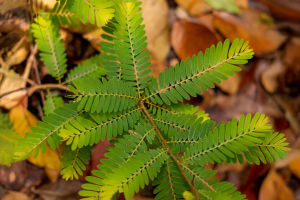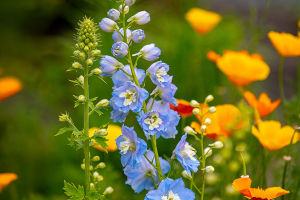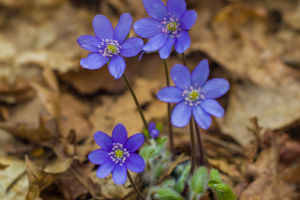Delphiniums, also known as larkspurs, have a magical, ethereal quality to them, don't they? Their flowers resemble little flying swallows, with bright colors and graceful shapes, making them a favorite among many gardening enthusiasts.
However, growing delphiniums isn't as simple as just watering and sunbathing them. Today, let's dive into how to grow delphiniums, from selecting seeds to enjoying blooms, and guide you step by step to create a beautiful sea of flowers!
Preparation for Growing Delphiniums
Seed Selection
Delphinium seeds are quite small, so when selecting seeds, choose those that are plump and evenly colored. There are many varieties available on the market.
Beginners can start with common varieties like large-flowered delphiniums or dwarf delphiniums. Large-flowered delphiniums have big, bright flowers and are ideal for cut flowers, while dwarf delphiniums have a compact growth habit, making them suitable for pots or small flower beds.
Soil
Delphiniums have relatively high soil requirements. They prefer loose, fertile, and well-drained soil. You can mix garden soil, leaf mold, and river sand in a 2:2:1 ratio and add some organic fertilizer as a base fertilizer. Remember, delphiniums do not like acidic soil; the pH value should ideally be between 6.5 and 7.5.
Sowing Time
The timing of sowing is crucial for delphiniums. Generally, spring and autumn are the most suitable seasons. For spring sowing, March to April is ideal; for autumn sowing, wait until September to October. If you are in the north, delphiniums sown in spring will bloom in summer. In the south, autumn sowing is better because the high summer temperatures can cause delphiniums to go dormant.
Sowing and Seedling Cultivation
Sowing Method
Delphinium seeds are small, so you can directly scatter them on the soil surface and then lightly cover with a thin layer of soil, no more than 0.5 centimeters thick. After sowing, gently mist the soil with a spray bottle to keep it moist but not waterlogged.
Seedling Management
Delphinium seeds need a certain temperature to germinate, generally between 15 and 20 degrees Celsius. After sowing, place the pot in a cool, ventilated area, avoiding direct sunlight. The seeds will start to germinate in about 7 to 10 days. When the seedlings have 2 to 3 true leaves, they are ready for transplanting.
Daily Care for Delphiniums
Light
Delphiniums enjoy plenty of sunlight but do not like intense direct sun.
They can have full sun in spring and autumn, but during the hot summer months, provide some shade, especially from the strong midday sun, to prevent leaf scorch. If you are in the south, it's best to place delphiniums in a semi-shaded spot during summer to avoid heat damage.
Watering
Delphiniums have relatively high water requirements, but overwatering should be avoided. Follow the "dry-to-touch, wet-to-depth" principle. Water when the soil surface feels dry, and avoid waterlogging, which can cause root rot. During hot summer days, you can increase the watering frequency slightly, but ensure good ventilation to prevent diseases.
Fertilizing
Delphiniums are heavy feeders and need plenty of nutrients during their growing season. Apply a dilute liquid fertilizer every 10 to 15 days during the active growth period, such as well-rotted soybean water or compound fertilizer. Before flowering, you can increase phosphorus and potassium fertilizers to promote flower bud differentiation and make the flowers more vibrant.
Pruning
After the flowering period, promptly remove spent flowers to prevent excessive nutrient consumption. When pruning, cut the flower stems from the base to encourage new growth. If you want more blooms, pinch the tips during the growing season to promote the development of side branches.
Pest and Disease Control
Common diseases in delphiniums include powdery mildew and gray mold, while pests mainly include aphids and spider mites. The key to preventing diseases is to maintain good ventilation and avoid excessive humidity. If you detect any diseases, you can spray with fungicides like mancozeb or chlorothalonil. For pests, treat with soapy water or insecticides.
Delphiniums may be a bit delicate, but with the right care, they can create a stunning sea of flowers in your garden. Every step, from seed selection to sowing, watering to fertilizing, requires careful attention. We hope this guide helps you grow healthy, beautiful delphiniums and fills your garden with life and color!


